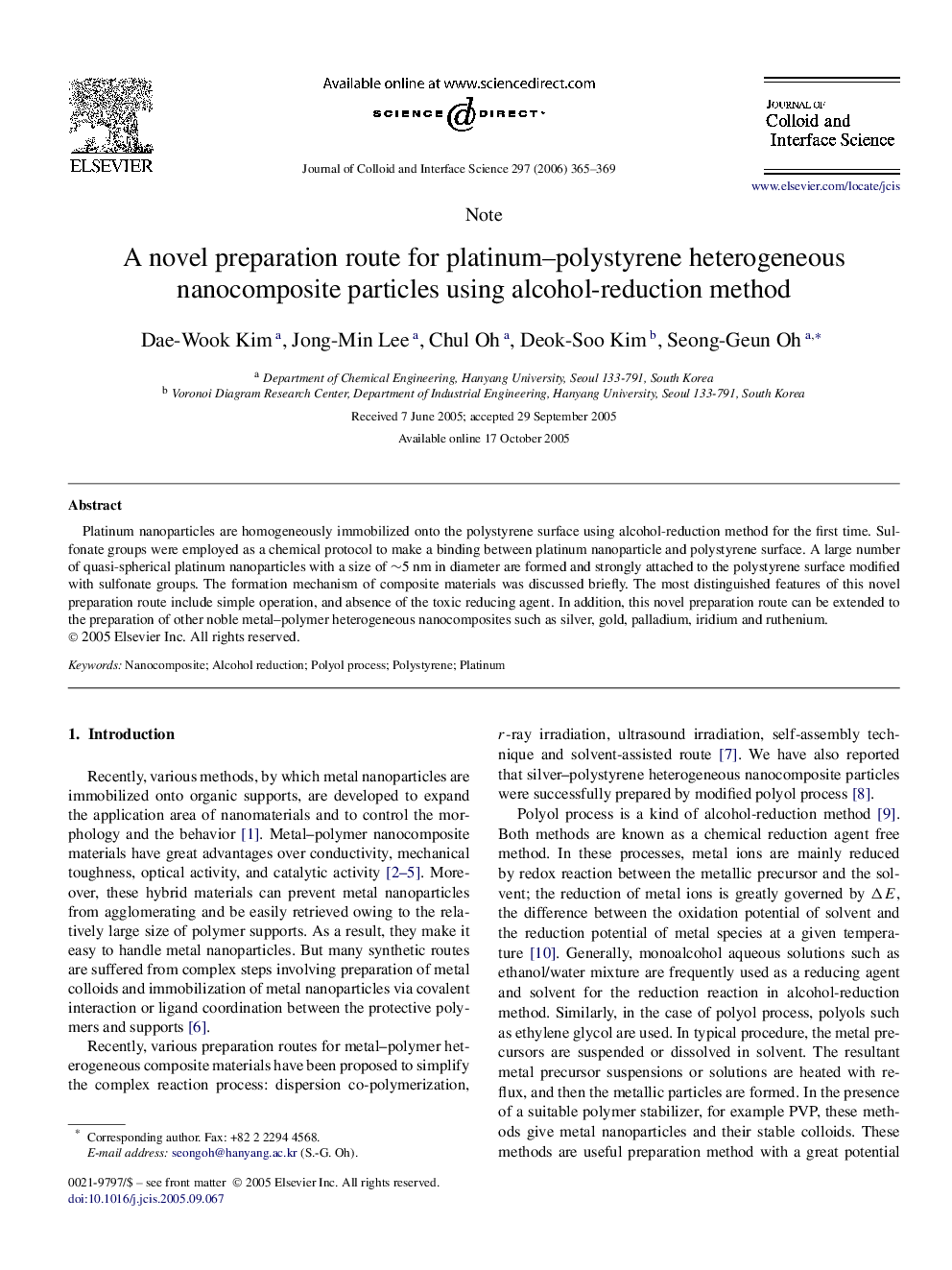| Article ID | Journal | Published Year | Pages | File Type |
|---|---|---|---|---|
| 613371 | Journal of Colloid and Interface Science | 2006 | 5 Pages |
Platinum nanoparticles are homogeneously immobilized onto the polystyrene surface using alcohol-reduction method for the first time. Sulfonate groups were employed as a chemical protocol to make a binding between platinum nanoparticle and polystyrene surface. A large number of quasi-spherical platinum nanoparticles with a size of ∼5 nm in diameter are formed and strongly attached to the polystyrene surface modified with sulfonate groups. The formation mechanism of composite materials was discussed briefly. The most distinguished features of this novel preparation route include simple operation, and absence of the toxic reducing agent. In addition, this novel preparation route can be extended to the preparation of other noble metal–polymer heterogeneous nanocomposites such as silver, gold, palladium, iridium and ruthenium.
